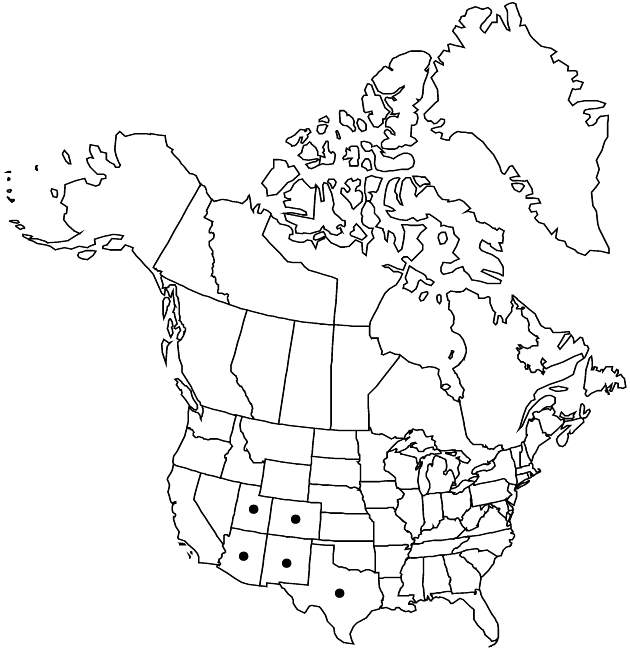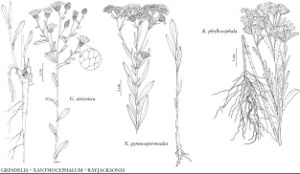Grindelia arizonica
Proc. Amer. Acad. Arts 17: 208. 1882.
Perennials, (10–)25–70 cm. Stems erect, stramineous to reddish, glabrous. Cauline leaf blades oblong, spatulate, or oblanceolate to linear, 15–45(–85) mm, lengths mostly 3–8 times widths, bases ± cuneate, margins serrate (teeth from bases to apices or mostly toward apices, apiculate to setose), entire, or (proximal leaves) pinnately lobed to coarsely toothed, apices acute, faces glabrous (or scabridulous near margins), sparsely, or not at all, gland-dotted. Heads usually in corymbiform to paniculiform arrays, rarely borne singly. Involucres usually campanulate to obconic, sometimes hemispheric, 4–11 × 8–17 mm. Phyllaries in 4–6 series, linear to ± lanceolate, usually appressed, sometimes weakly reflexed or spreading, apices slightly recurved to straight, subulate or acuminate to deltate, slightly to strongly resinous. Ray florets 0 or 8–26; laminae (5–)7–10 mm. Cypselae stramineous to brown, 2.5–4 mm, apices coronate or knobby, faces striate to furrowed; pappi of 2–4 straight or weakly contorted, smooth setiform awns or subulate scales 2–5 mm, shorter than disc corollas. 2n = 12.
Phenology: Flowering Jun–Sep(–Oct).
Habitat: Open, rocky slopes, mesas, ridges, canyons, fields, stream banks
Elevation: (300–)1500–2500 m
Distribution

Ariz., Colo., N.Mex., Tex., Utah, Mexico (Chihuahua, Coahuila).
Discussion
Plants of Grindelia arizonica with ± hemispheric involucres and apices of phyllaries ± subulate (versus lance-acuminate to deltate) have been called var. neomexicana (or G. neomexicana). Plants known as var. stenophylla differ from typical G. arizonica in having leaf margins toothed mostly toward apices (versus toothed from bases to apices). Plants of G. arizonica (from northern Arizona, southwestern Colorado, and southeastern Utah) with leaf margins pinnately lobed to ± laciniate or coarsely dentate have been called G. laciniata. Some herbarium specimens that have been identified as G. aphanactis (see 4. G. squarrosa) appear to be discoid plants of G. arizonica. Hybrids between G. arizonica and G. squarrosa have been recorded from Colorado and Utah.
Selected References
None.
